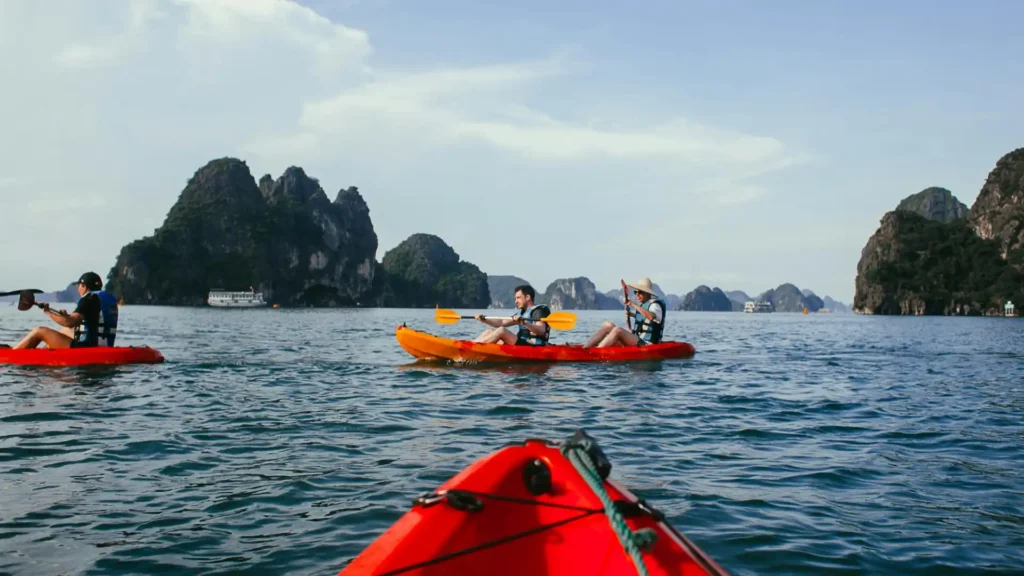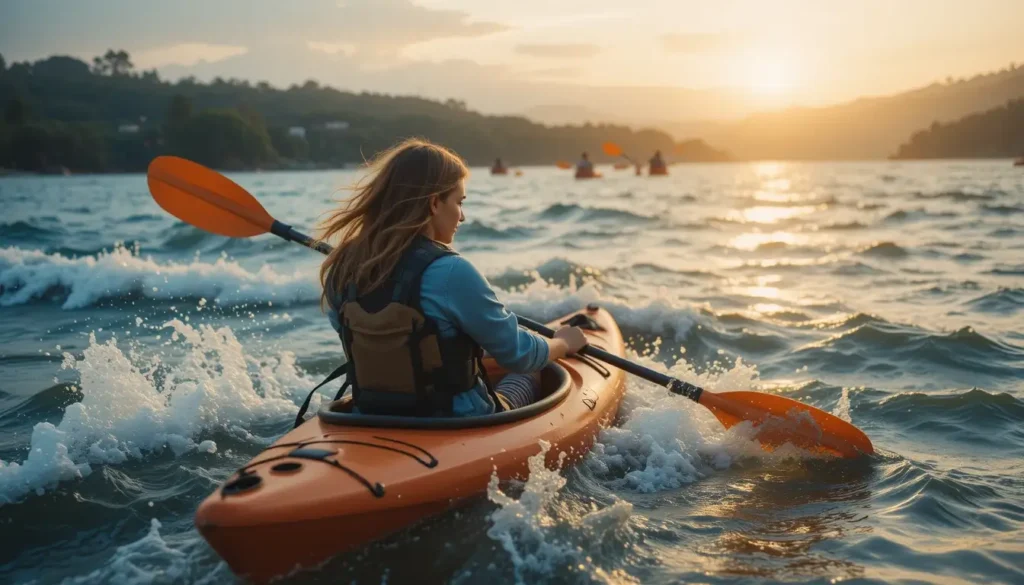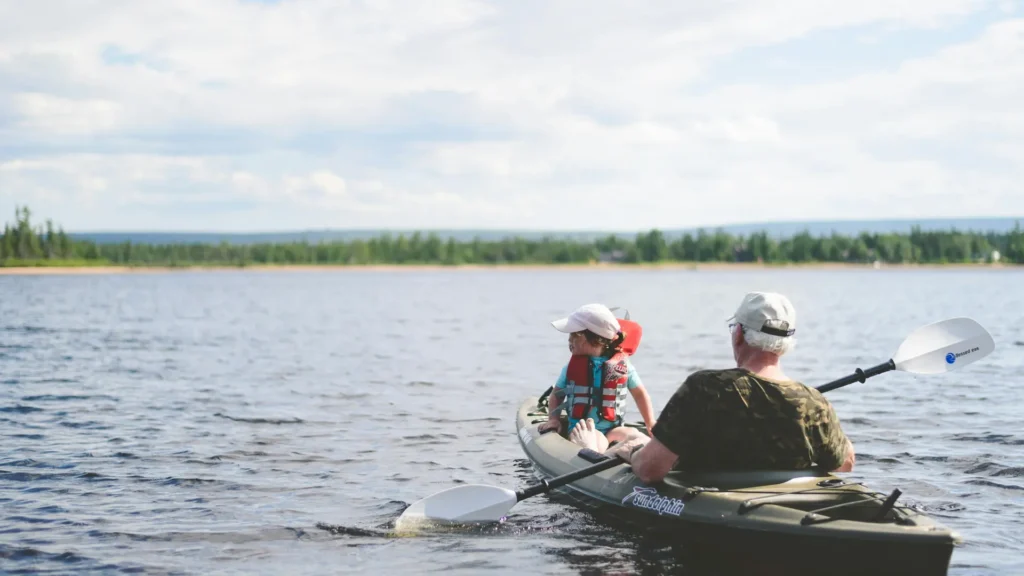Improving your kayaking endurance can transform your experience on the water. You can paddle longer, explore farther, and feel less tired at the end of the day. Many kayakers struggle with stamina, stopping short of what their body can actually handle. The good news is that endurance is a skill, and you can train it.
Endurance matters because it directly affects your safety and enjoyment. Stronger stamina reduces fatigue, helping you maintain good technique for longer trips. It also allows you to respond to changing conditions, currents, and wind. This guide will show clear steps to build your endurance, so every paddle feels easier and more satisfying.
Strength and Conditioning for Kayaking
Your muscles are the engine behind every paddle. Strong shoulders, back, arms, and core allow you to generate more power with less effort. Start with basic exercises such as rows, push-ups, and planks to build foundational strength. Resistance band exercises add variety and help mimic paddling motions. As your muscles get stronger off the water, you will notice smoother strokes and longer sessions without fatigue.
Core strength is critical. Your torso rotation drives efficient strokes and protects your lower back from strain. Exercises like Russian twists, bicycle crunches, and seated medicine ball rotations train the muscles that control this rotation. A strong core stabilizes your body in the kayak, letting your arms and shoulders focus on generating force.
Cardiovascular fitness is equally important. Running, cycling, swimming, or rowing trains your heart and lungs to deliver oxygen efficiently to working muscles. Start with short sessions of 20–30 minutes, three times a week. Gradually increase the duration or intensity. A strong cardiovascular system allows you to paddle longer without feeling winded, and it improves recovery between bursts of harder effort on the water.
Interval training boosts endurance effectively. Alternate between periods of higher intensity and moderate effort. For example, paddle hard for two minutes, then slow down for three minutes, and repeat several times. This simulates real conditions, where currents, wind, or waves require sudden energy bursts.
Flexibility supports both strength and endurance. Tight muscles limit range of motion and increase fatigue. Stretch your shoulders, back, hips, and hamstrings regularly. Yoga or dedicated stretching routines maintain mobility and help prevent injuries. Flexible muscles move more efficiently, which reduces wasted effort and helps maintain proper technique for longer sessions.
Balance and stability exercises complement strength and flexibility work. Standing on one leg, using a balance board, or practicing controlled movements on an unstable surface trains muscles that keep your kayak steady. Improved stability reduces energy loss during paddling and helps you maintain endurance in choppy water.
A complete strength and conditioning program should include all these elements. Build upper body and core strength, boost cardiovascular fitness, maintain flexibility, and train balance. Consistency is key. Practicing off the water prepares your body to handle longer, more demanding paddling sessions with confidence and efficiency.
Technique Refinement
Technique directly affects how much energy you use while paddling. Proper stroke mechanics make every movement count and reduce fatigue. Focus on rotating your torso rather than just pulling with your arms. Engage your core during each stroke to generate power efficiently. Smooth, continuous strokes maintain steady speed and conserve energy over long distances.
Your body position is critical for efficiency. Sit upright with a slight forward lean to allow full stroke length. Keep your paddle close to the kayak to reduce drag and maintain balance. Pay attention to hand placement and grip. Small adjustments in posture and stroke technique can dramatically increase endurance and reduce strain during long trips.
Pacing is another key part of effective technique. Start at a controlled rhythm instead of sprinting at the beginning. Consistent strokes prevent early fatigue and help you save energy for later sections of a trip. Listen to your body to gauge effort and adjust pace as needed. Over time, you will learn how to maintain a sustainable speed that feels natural and efficient.
Practice drills improve technique. Try single-stroke exercises where you focus on rotation, hand position, or body alignment. Use mirror drills or video feedback if possible to see your form. The better your technique, the less energy you waste, which directly improves endurance.
Structured On-Water Training
Time on the water is essential to build real endurance. Start with shorter sessions and gradually increase both distance and duration. Tracking your performance helps you see progress and adjust training. Water-based practice strengthens muscles while also improving cardiovascular capacity and paddling efficiency.
Interval training is highly effective for building endurance. Paddle at a higher intensity for a set period, then slow down to recover. Repeat several cycles during your session. This type of training simulates real conditions where sudden bursts of effort are needed, such as fighting currents, wind, or waves.
Varying your environment challenges your skills and builds stamina. Rivers, lakes, and coastal areas each present unique demands. Moving from calm water to choppy conditions forces your muscles and technique to adapt. This variety prevents plateaus and keeps your training effective.
Include endurance-focused drills during each session. For example, practice maintaining a steady pace for extended periods or simulate a long trip with continuous paddling. Track heart rate, stroke rate, and distance to monitor improvements. Consistent, structured on-water training makes endurance gains measurable and sustainable.
Combine technique and water time for maximum effect. Strong technique reduces wasted effort, while consistent paddling strengthens muscles and cardiovascular fitness. Over weeks, this integrated approach will allow longer, smoother, and more enjoyable paddling trips.
Nutrition and Recovery
Proper nutrition fuels your paddling and helps maintain endurance. Eat balanced meals that include carbohydrates, protein, and healthy fats before long sessions. Carbohydrates provide quick energy for your muscles, protein supports repair, and fats give sustained energy. Plan meals at least 1–2 hours before paddling to allow digestion and avoid discomfort on the water.
Hydration is crucial for performance. Even mild dehydration can reduce strength, focus, and stamina. Drink water before, during, and after paddling. Electrolyte drinks can help on hot days or during long trips to replace lost minerals. Carry small bottles and sip regularly instead of waiting until you feel thirsty.
Small snacks during trips maintain energy levels. Nuts, fruit, or energy bars are easy to carry and digest. Eating at regular intervals prevents sudden energy crashes. Maintaining consistent fuel supports both mental focus and physical performance during long paddles.
Recovery is a vital part of training that is often overlooked. Muscles rebuild stronger during rest, which directly improves endurance. Include stretching routines after paddling to reduce soreness and maintain flexibility. Adequate sleep allows the body to repair itself and replenish energy.
Active recovery also helps. Light paddling, walking, or gentle yoga keeps blood flowing to muscles without adding stress. Ignoring recovery can lead to fatigue, slower progress, or injuries that halt training. Planning rest days, nutrition, and stretching creates a complete system to maximize your endurance gains.
Mindset and Consistency
Mental endurance is just as important as physical strength in kayaking. Long paddles test your focus, patience, and determination. Staying mentally engaged helps you maintain technique and pacing, which directly affects stamina. Breaking trips into smaller segments or checkpoints gives your mind achievable goals and keeps motivation high throughout the journey.
Celebrate milestones during and after your paddles. Completing a longer distance, maintaining a steady pace, or improving stroke efficiency are wins to acknowledge. Recognizing progress reinforces positive habits and encourages consistency. Mental reinforcement can make training feel rewarding rather than exhausting.
Consistency is the backbone of real improvement. Regular practice compounds strength, technique, and endurance gains over time. Skipping sessions slows progress and makes it harder to maintain fitness levels. A structured routine that combines strength training, cardio, technique drills, and on-water practice ensures steady, sustainable improvement.
Set a clear weekly plan and track your sessions. Note distance, duration, stroke rate, and effort level. Monitoring progress keeps you accountable and helps identify areas for adjustment. Over weeks and months, the cumulative effect of consistent training builds both confidence and stamina.
Combining physical training, proper technique, on-water practice, nutrition, recovery, and mental focus produces noticeable results. You will paddle farther without fatigue, feel more confident, and enjoy longer trips. Each session reinforces skill and stamina, turning consistent effort into measurable progress. Your journeys will become more rewarding, opening opportunities to explore new waters safely and with confidence.




